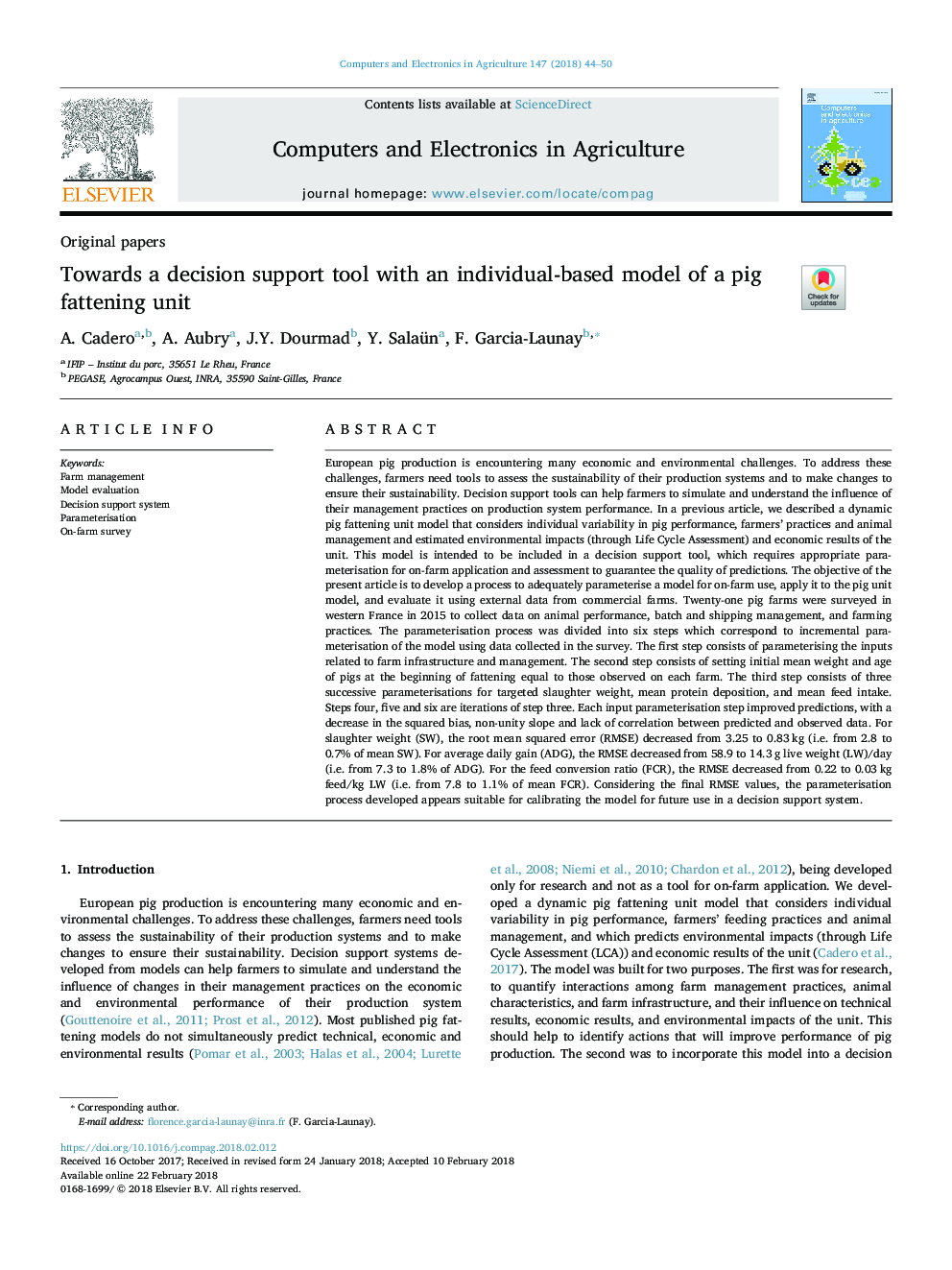| کد مقاله | کد نشریه | سال انتشار | مقاله انگلیسی | نسخه تمام متن |
|---|---|---|---|---|
| 6539607 | 1421101 | 2018 | 7 صفحه PDF | دانلود رایگان |
عنوان انگلیسی مقاله ISI
Towards a decision support tool with an individual-based model of a pig fattening unit
ترجمه فارسی عنوان
به سوی یک ابزار پشتیبانی از تصمیم با یک مدل مبتنی بر فرد از واحد خوک
دانلود مقاله + سفارش ترجمه
دانلود مقاله ISI انگلیسی
رایگان برای ایرانیان
کلمات کلیدی
مدیریت مزرعه، ارزیابی مدل، سیستم پشتیبانی تصمیم، پارامتر کردن، نظرسنجی در مزرعه،
موضوعات مرتبط
مهندسی و علوم پایه
مهندسی کامپیوتر
نرم افزارهای علوم کامپیوتر
چکیده انگلیسی
European pig production is encountering many economic and environmental challenges. To address these challenges, farmers need tools to assess the sustainability of their production systems and to make changes to ensure their sustainability. Decision support tools can help farmers to simulate and understand the influence of their management practices on production system performance. In a previous article, we described a dynamic pig fattening unit model that considers individual variability in pig performance, farmers' practices and animal management and estimated environmental impacts (through Life Cycle Assessment) and economic results of the unit. This model is intended to be included in a decision support tool, which requires appropriate parameterisation for on-farm application and assessment to guarantee the quality of predictions. The objective of the present article is to develop a process to adequately parameterise a model for on-farm use, apply it to the pig unit model, and evaluate it using external data from commercial farms. Twenty-one pig farms were surveyed in western France in 2015 to collect data on animal performance, batch and shipping management, and farming practices. The parameterisation process was divided into six steps which correspond to incremental parameterisation of the model using data collected in the survey. The first step consists of parameterising the inputs related to farm infrastructure and management. The second step consists of setting initial mean weight and age of pigs at the beginning of fattening equal to those observed on each farm. The third step consists of three successive parameterisations for targeted slaughter weight, mean protein deposition, and mean feed intake. Steps four, five and six are iterations of step three. Each input parameterisation step improved predictions, with a decrease in the squared bias, non-unity slope and lack of correlation between predicted and observed data. For slaughter weight (SW), the root mean squared error (RMSE) decreased from 3.25 to 0.83â¯kg (i.e. from 2.8 to 0.7% of mean SW). For average daily gain (ADG), the RMSE decreased from 58.9 to 14.3â¯g live weight (LW)/day (i.e. from 7.3 to 1.8% of ADG). For the feed conversion ratio (FCR), the RMSE decreased from 0.22 to 0.03â¯kg feed/kg LW (i.e. from 7.8 to 1.1% of mean FCR). Considering the final RMSE values, the parameterisation process developed appears suitable for calibrating the model for future use in a decision support system.
ناشر
Database: Elsevier - ScienceDirect (ساینس دایرکت)
Journal: Computers and Electronics in Agriculture - Volume 147, April 2018, Pages 44-50
Journal: Computers and Electronics in Agriculture - Volume 147, April 2018, Pages 44-50
نویسندگان
A. Cadero, A. Aubry, J.Y. Dourmad, Y. Salaün, F. Garcia-Launay,
